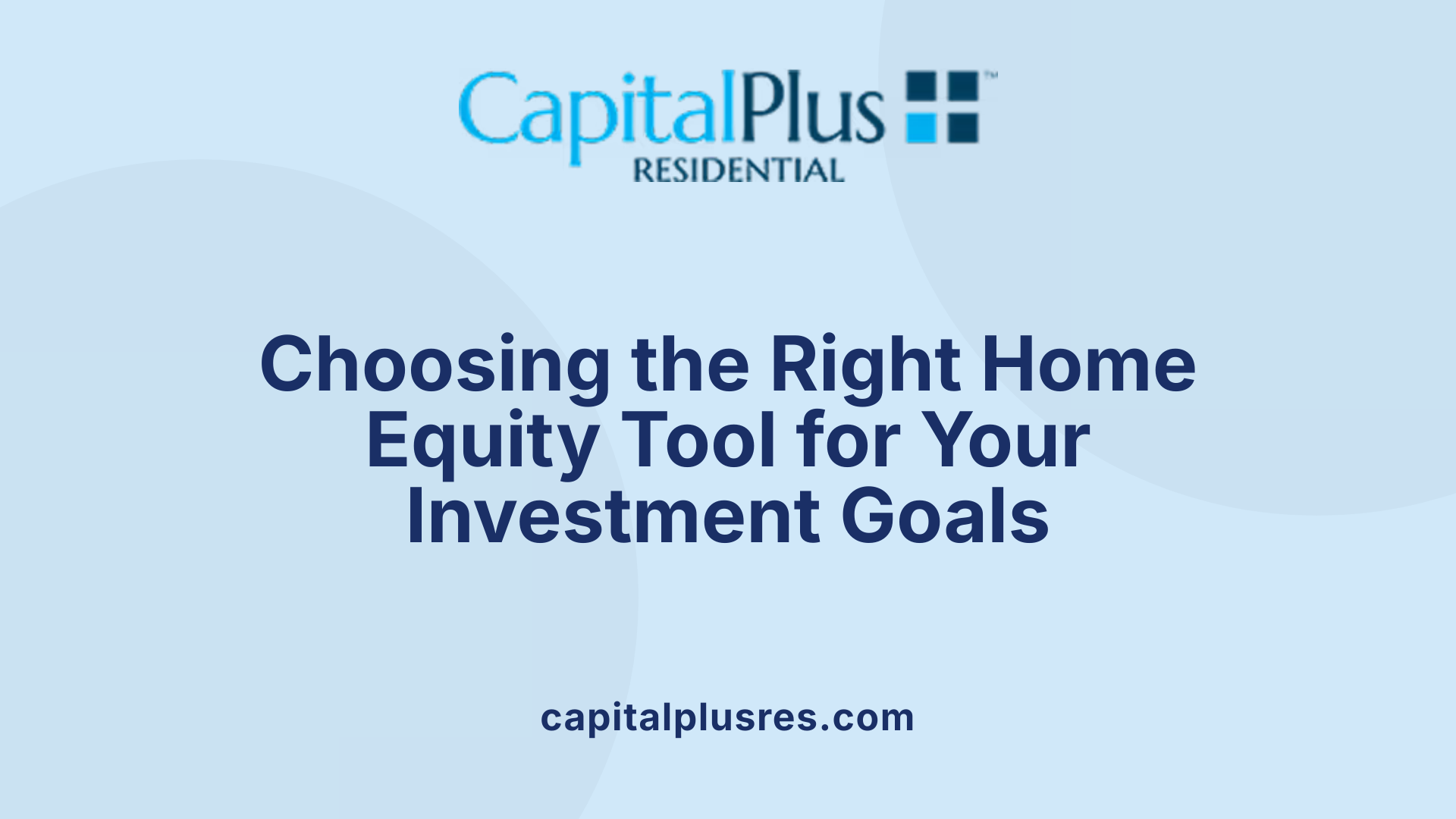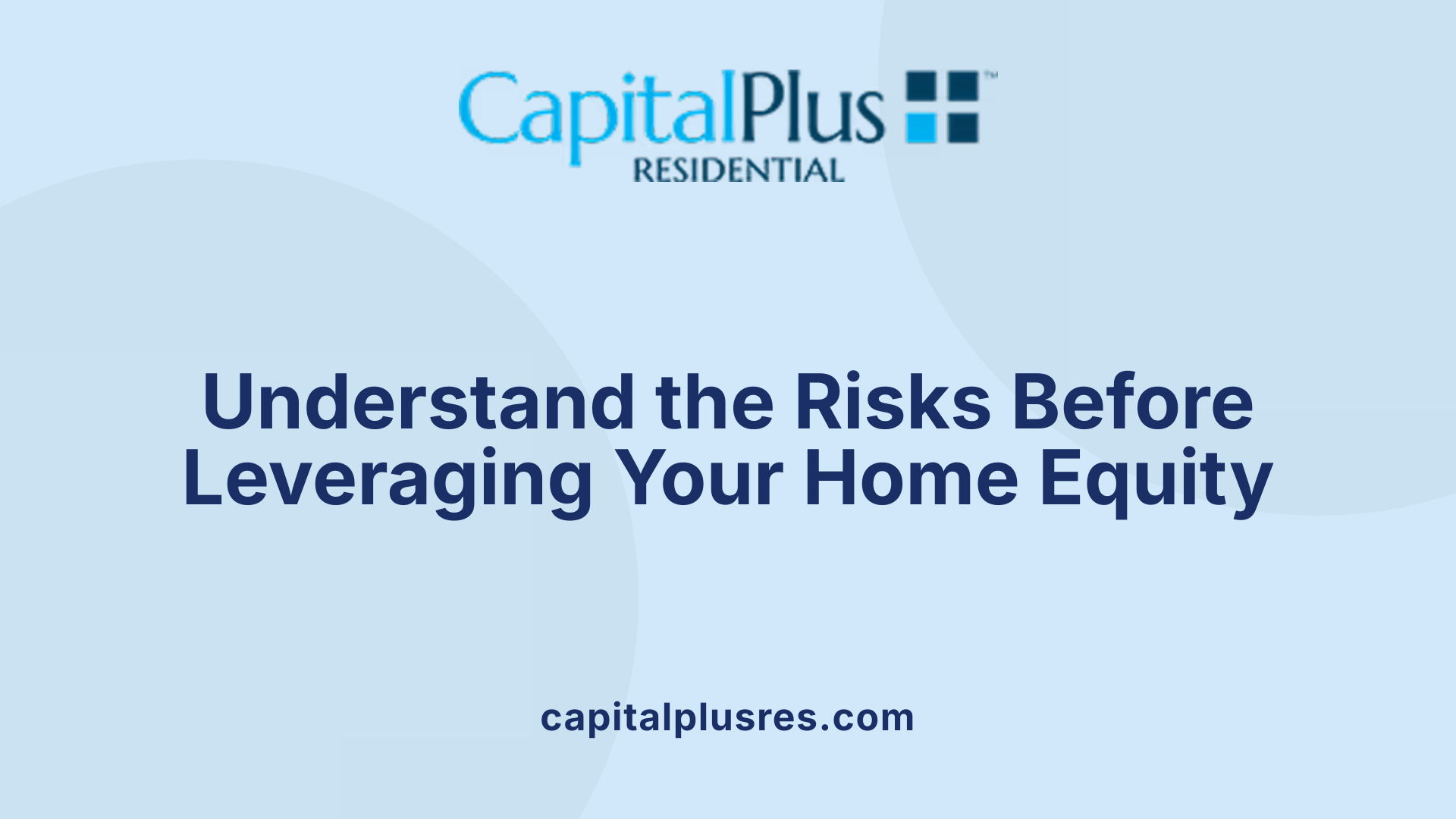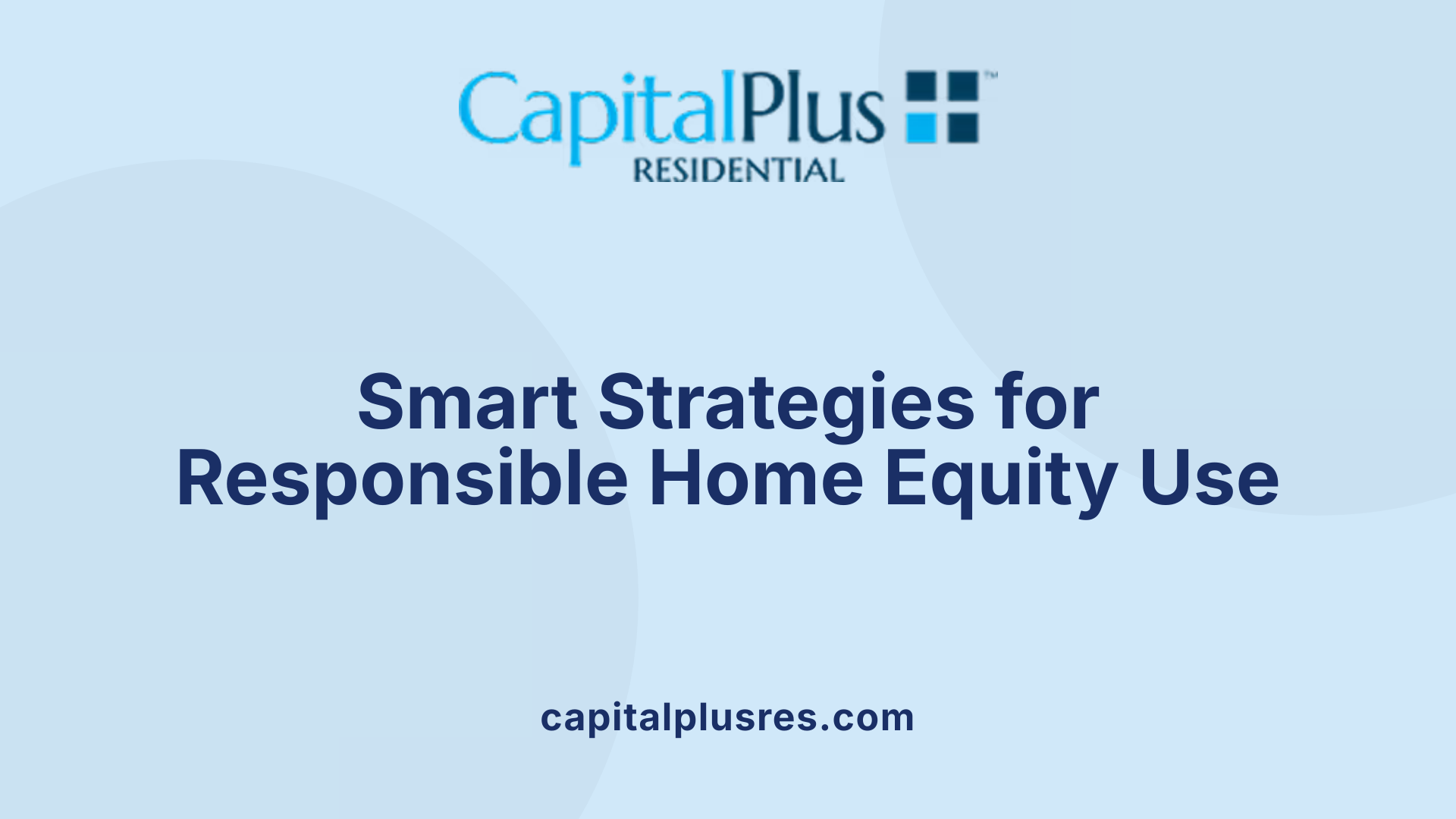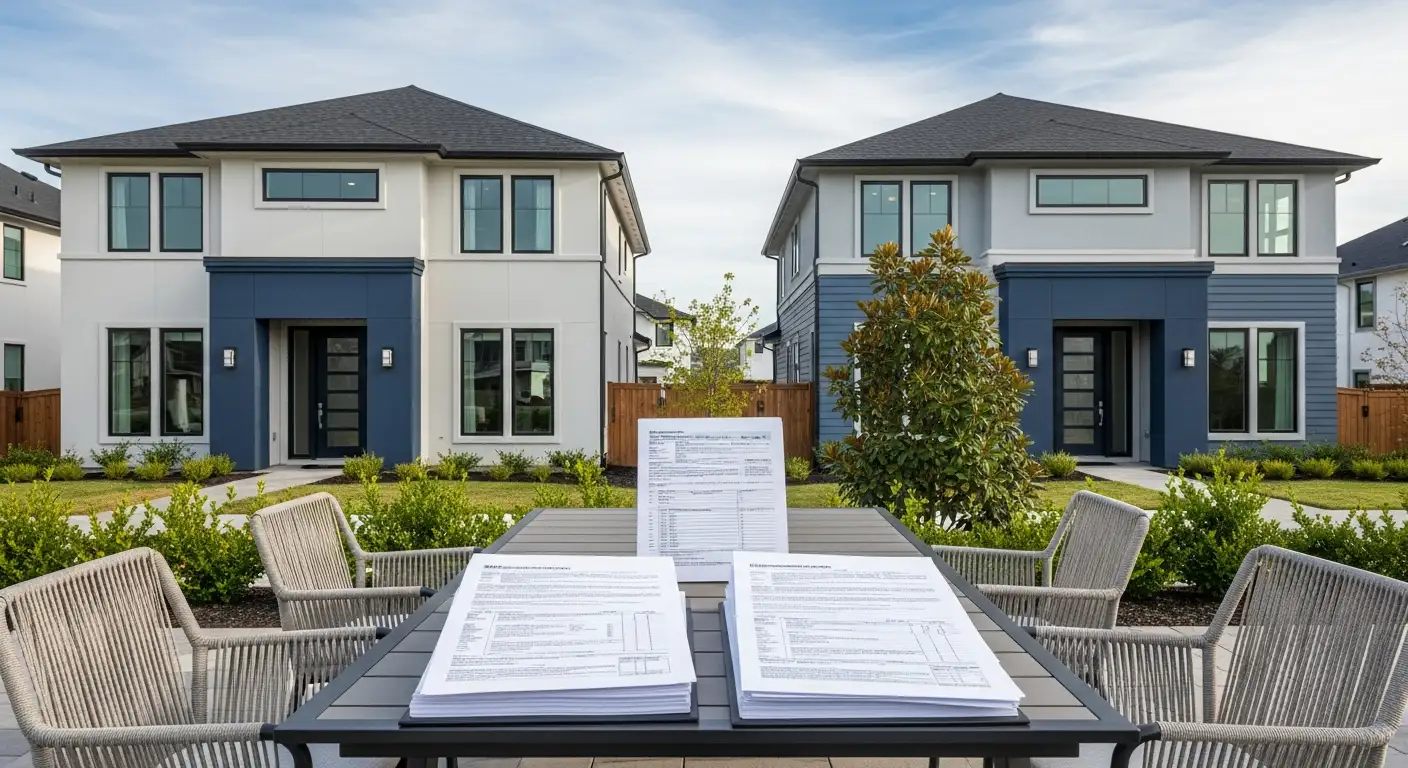Harnessing Home Equity for Real Estate Investment
Utilizing your home’s equity can be an effective way to finance the purchase of another property, whether for investment or personal use. This article explores various methods, benefits, and risks involved, providing comprehensive guidance to help you make informed decisions on leveraging your home equity.
Understanding Home Equity and Its Utilization

What is home equity?
Home equity represents the portion of a property that you truly own, calculated by subtracting the amount you owe on your mortgage from your home's current market value. If your home is valued at $400,000 and you owe $250,000, your equity is $150,000. Building equity occurs as you make mortgage payments and the property appreciates in value.
How can I determine available equity?
To assess how much equity you can use, you need to estimate your home's current market value. This can be done through online tools like Realtor.com, Redfin, or Zillow, or by obtaining a professional appraisal. Subtract the remaining balance of your mortgage from this estimated value. Lenders typically allow you to borrow up to 80% of your home’s value minus your existing mortgage, meaning you could potentially access up to 80% or more, depending on your creditworthiness and lender limits.
Importance of assessing home value and mortgage balance
Accurately knowing your home’s current value and your existing mortgage balance is crucial before considering leveraging home equity. Overestimating your home's worth could lead to borrowing more than your property can support, increasing the risk of financial strain or foreclosure. Conversely, underestimating might limit your borrowing potential. Regularly updating these figures ensures you make informed decisions about using your home’s equity to finance additional real estate investments or other significant expenses.
How can I use home equity to finance the purchase of another property?
To use home equity for buying another property, homeowners typically turn to a home equity loan or a line of credit (HELOC). A home equity loan provides a one-time lump sum amount with a fixed interest rate, ideal for a large, upfront expense. A HELOC functions like a credit card, offering flexible borrowing with fluctuating interest rates, during the draw period.
Qualifying for these depends on factors such as your credit score, debt-to-income ratio, and the loan-to-value ratio of your home—usually up to 80% or 85%. It’s also possible to pursue a cash-out refinance, replacing your existing mortgage with a larger one and taking the difference in cash. These methods allow quick access to funds, which can be used for the down payment, purchase price, or other costs involved in acquiring a second property.
Methods and options for leveraging home equity to buy an additional property
You can choose between different financial products based on your needs:
| Option | Description | Typical Use | Considerations |
|---|---|---|---|
| Home Equity Loan | Lump sum, fixed interest rate | Immediate large costs | Fixed payments, interest may be tax-deductible if used correctly |
| HELOC | Revolving credit, variable rate | Flexible borrowing during draw period | Interest-only payments initially, variable interest rate, caution needed for rising payments |
| Cash-Out Refinance | Larger mortgage replacing existing one | One-time large cash amount | Extends your mortgage term, potential to lower interest rate |
Using these options involves risks such as increasing your overall debt and reducing available equity, which can be problematic if property values fall.
Benefits and risks of using home equity for a second home
Benefits include the ability to access significant funds without liquidating savings, possibly obtaining lower interest rates compared to personal loans, and making larger down payments which strengthen your buying position. It can also free up cash for renovations or investments.
However, there are risks. You may put your primary residence in jeopardy if you default on payments, especially if market values decline. Additional debt increases your financial obligations, and variable interest rates can cause payments to rise unexpectedly.
How financing options are advantageous for real estate investment
Using products like HELOCs can be particularly beneficial for investors, offering an accessible line of credit that can be drawn upon repeatedly. They allow for quick funding of down payments, avoiding larger upfront costs, and the revolving feature supports ongoing investments.
Interest on HELOCs used for investment properties can often be tax-deductible, but professional advice is recommended to confirm tax benefits.
Guidance for leveraging home equity for property purchases
Before proceeding, evaluate your available equity by estimating your home’s value and subtracting your current mortgage. Shop around for the best lender terms, noting interest rates, fees, and repayment conditions. Consider consulting financial experts to fully understand the implications, including the risks of market fluctuations and potential foreclosure.
Maintain a clear plan for repayment, considering your long-term financial goals. Make sure any new debt aligns with your overall financial situation and capacity to manage payments.
Factors to consider when using home equity to acquire property
Critical factors include:
- Current home value and mortgage balance: Know precisely your available equity.
- Loan-to-value ratio: Ensure it stays within acceptable limits to avoid over-borrowing.
- Interest rates and costs: Compare fixed versus variable rates and related closing costs.
- Market conditions: Be aware that declining home values could reduce your equity, increasing financial risk.
- Ability to repay: Confirm you can handle adjusted payments, especially if rates rise.
Using home equity for property investment can be an effective strategy if approached with careful planning and professional advice, always weighing the potential rewards against the inherent risks.
Types of Home Equity Financing and Their Features

What are the methods and options for leveraging home equity to buy an additional property?
Homeowners seeking to acquire a second property often turn to different home equity financing options. The most common methods include a home equity loan, a home equity line of credit (HELOC), and a cash-out refinance.
A home equity loan provides a lump sum of money at a fixed interest rate, which is paid back over a set period, usually between 5 to 30 years. This option is suitable when you know the exact amount needed upfront, such as a full purchase price or a significant down payment.
A HELOC functions like a credit card secured by your home. It offers a revolving line of credit that you can draw from as needed, up to a certain limit, during an initial draw period typically lasting 5 to 10 years. The interest rates are variable, which means payments can fluctuate depending on market rates.
A cash-out refinance involves replacing your current mortgage with a larger loan and taking the excess cash from the increased mortgage amount. This method effectively converts home equity into liquid funds that can be used to purchase a second property.
Using any of these options requires careful consideration of the risks. Borrowing against home equity increases your overall debt and can threaten your home if payments are missed. Each option also has distinct long-term implications for your financial stability and the ability to manage multiple debts.
What are the typical eligibility requirements for home equity borrowing?
Qualifying to borrow against your home equity generally depends on several key factors. Most lenders look for a strong credit score, typically 720 or higher, which indicates good creditworthiness.
Your debt-to-income (DTI) ratio also plays a crucial role. Lenders prefer a DTI of 43% or less, displaying manageable levels of debt relative to your income.
Furthermore, your loan-to-value (LTV) ratio should usually be 80% or lower. This means the total of your existing mortgage plus the new borrowing should not exceed 80% of your home’s appraised value.
Assessment of your home’s value is often conducted through professional appraisals, although you can get initial estimates from online sources like Realtor.com, Redfin, or Zillow.
Meeting these criteria increases your chances of approval, making it easier to access the funds needed for purchasing additional properties. Maintaining good financial health and a solid credit profile are essential for securing favorable terms.
| Aspect | Typical Requirement | Additional Notes |
|---|---|---|
| Credit score | 720 or higher | Determines creditworthiness |
| Debt-to-income ratio | 43% or less | Shows manageable debt levels |
| Loan-to-value ratio | 80% or less | Ensures sufficient equity available |
| Property appraisal | Often required | Confirms current market value |
| Overall financial health | Stable income, good credit history | Increases approval likelihood |
By understanding these eligibility requirements and the different financing options, homeowners can make informed decisions when leveraging their home equity for real estate investments.
Risks and Considerations When Using Home Equity

What are the benefits and risks of using home equity for purchasing a second home?
Using home equity to purchase a second home can be a powerful financial tool. It enables homeowners to access large sums of money without selling assets, often at lower interest rates compared to unsecured loans. This can help secure bigger down payments, make offers more competitive in real estate bidding, or buy properties outright.
However, this approach carries considerable risks. Borrowing increases overall debt and reduces home equity, which could lead to negative equity if property values decline. If homeowners miss payments, they risk foreclosure on their primary residence. Additionally, variable interest rates on some home equity products can cause payments to rise over time. Borrowing against your home also complicates your finances and loan eligibility, making future borrowing more difficult.
Overall, leveraging home equity offers strategic benefits but demands careful risk management and thorough financial planning to avoid burdensome debt or loss of property.
How can fluctuating real estate markets influence the decision to leverage home equity?
Real estate market fluctuations can strongly affect decisions related to home equity borrowing. A declining property market can decrease your home's value, potentially leading to negative equity—where your mortgage exceeds your home's worth. This situation makes borrowing against the property riskier and can increase borrowing costs, as lenders may tighten credit standards.
During downturns, the available equity diminishes, limiting borrowing capacity and possibly forcing homeowners to reconsider their plans. Market declines also affect future property appreciation, impacting long-term financial goals. Therefore, timing is crucial: using home equity when markets are strong can be advantageous, while downturns may increase risk.
Homeowners should stay informed on market trends, evaluate current equity levels, and consider consulting financial advisors before leveraging their property under uncertain conditions.
What are the primary costs and fees associated with using home equity loans or HELOCs?
Utilizing home equity products involves various upfront and ongoing costs. Key fees include loan origination or application fees, which are charged for processing the loan. An appraisal might be necessary to determine the home's current market value, adding to initial expenses.
Closing costs, similar to traditional mortgages, can include title searches, attorney fees, and other administrative charges. Some lenders impose annual or monthly maintenance fees for managing the loan or line of credit. Early repayment may incur penalties, so understanding the repayability terms is essential.
Additional costs can include increased property taxes and homeowners insurance if the new loan or line of credit raises the home's assessed value or if lenders require Mortgage Insurance. Comparing different lenders’ fee structures and understanding the full financial commitment helps homeowners make informed decisions about leveraging their home equity.
Checklist for Using Home Equity Responsibly

What considerations and factors to evaluate when using home equity to acquire property?
When thinking about using home equity to buy a second home or investment property, it’s essential to evaluate several financial factors. First, assess your current home’s value and your existing mortgage balance. This helps determine how much equity you have available to borrow, considering that lenders typically allow borrowing up to about 80% of your home’s value minus what you owe.
Next, scrutinize the different financing options—be it a home equity loan, a HELOC, or a cash-out refinance. Each has unique features: a home equity loan offers a lump sum with fixed payments, a HELOC provides a revolving credit line with variable rates, and a cash-out refinance replaces your existing mortgage with a larger loan for cash. Understanding the costs, interest rates, repayment terms, and potential fees or taxes involved with each is crucial.
It’s also vital to evaluate your ability to meet ongoing payment obligations, especially since borrowing against your home increases debt levels and reduces home equity. Consider your income stability, other debts, and overall financial health. Planning for property market fluctuations is equally important; declines in home value could lead to underwater mortgages, affecting your financial security.
Lastly, evaluate the long-term implications, including how additional debt might impact your credit score and borrowing capacity in the future. Consulting with financial and real estate professionals can help clarify these considerations, ensuring your strategy aligns with your financial goals and risk appetite.
How can I estimate the amount of home equity I have available?
To estimate your home equity, start by determining your home’s current market value. This can be done by reviewing recent sales of comparable properties in your area using online tools like Zillow, Redfin, or Realtor.com, or by obtaining a professional appraisal.
Subtract your outstanding mortgage balance from this estimated market value. For example, if your home is worth $400,000 and you owe $320,000, your equity is roughly $80,000.
Lenders typically permit borrowing up to 80% of your home’s value, so multiply the current value by 80%, then subtract what you still owe. Continuing the example, 80% of $400,000 is $320,000. Since you owe $320,000, you may not have additional equity to borrow unless the value has increased or you pay down your mortgage.
It’s advisable to get a professional appraisal or speak with your lender for a precise assessment. Remember that some lenders may have specific requirements for documentation or may consider other factors, like your credit score and debt-to-income ratio, when deciding how much you can borrow.
What are the typical costs and risks associated with using home equity for property purchase?
Using home equity to finance a second property can come with various costs and risks. Costs may include closing fees, appraisal fees, application fees, and possibly taxes, depending on your location.
As for risks, leveraging home equity increases your overall debt load, which can strain your finances if your income fluctuates or if property values decline. There is a danger of turning your home into debt, especially if you take on multiple loans or if market conditions worsen.
The risk of having an underwater mortgage exists if property values fall below your total debts. This situation could make it difficult to sell or refinance without incurring a loss.
Additionally, interest payments on home equity loans or lines of credit might not always be tax-deductible, especially if the borrowed funds are not used to substantially improve the home securing the loan.
Lastly, non-payment could lead to foreclosure, posing a significant risk to your homeownership and financial stability. Therefore, thorough planning, proper understanding of loan terms, and prudent borrowing are crucial for responsible use.
How should I develop a comprehensive financial plan before borrowing against my home?
A detailed financial plan is vital before tapping into your home equity. Start by evaluating your overall financial situation, including income, expenses, debts, and savings. Clearly define your goals—whether it’s purchasing a second home, investment property, or funding renovations.
Calculate how much you need to borrow and ensure it aligns with your repayment capacity. Consider future income prospects and potential market changes that might affect property values.
Review different financing options thoroughly, comparing interest rates, repayment terms, associated fees, and tax implications. Seek advice from financial advisors, tax professionals, or real estate experts to understand all considerations.
Incorporate potential risks, such as market downturns or interest rate increases, into your plan. Set aside emergency funds to cover unexpected changes or costs.
Finally, establish a plan for repayment and long-term affordability, considering how additional debt might affect your credit score and future borrowing ability. A well-crafted plan ensures that using home equity complements your broader financial strategy without exposing you to undue risk.
| Aspect | Details | Additional Notes |
|---|---|---|
| Home value estimation | Use online tools or professional appraisal | Helps determine available equity |
| Borrowing limits | Typically up to 80% of home value minus mortgage | Varies by lender and borrower creditworthiness |
| Loan types | Home equity loan, HELOC, cash-out refinance | Different structures suit different financial needs |
| Costs involved | Closing costs, fees, taxes | Verify with lender before proceeding |
| Risks | Market fluctuations, increased debt, foreclosure risks | Ensure readiness for financial commitments |
| Financial planning | Assess capacity, goals, market conditions | Integrate into long-term financial strategy |
| Professional advice | Consult experts for tailored insights | Essential for responsible borrowing |
This structured approach will help you use your home equity strategically while avoiding common pitfalls, ensuring that your investments or property purchases are financially sound.
Making an Informed Decision
Leveraging home equity can be a powerful tool for purchasing additional properties, offering access to significant funds and favorable interest rates. However, it's crucial to evaluate each option carefully, considering potential risks such as market fluctuations, increased debt, and repayment obligations. Consulting with financial professionals and thoroughly understanding the terms and costs involved can help you optimize the benefits while minimizing risks. Responsible use of home equity, supported by sound financial planning, can unlock new opportunities for real estate investment and growth.
References
- Can I use a home equity loan to buy another house?
- Using Home Equity to Purchase a New Home | A Guide
- Can You Use Home Equity to Buy a Second House?
- Can You Use Home Equity to Buy a Second Home?
- Can You Use Home Equity To Buy Another House?
- Use a HELOC to Buy an Investment Property
- Using a HELOC to Buy a Second Home: Pros and Cons
- Can You Use Home Equity to Buy Another House?
- Using home equity to meet financial needs
- Using Home Equity to Purchase a New Home | A Guide
Latest Blog


Get Pre-Approved Today
Start your secure online application now so you can get pre-approved for a mortgage (and close on your dream home) quickly within 5 minutes.









